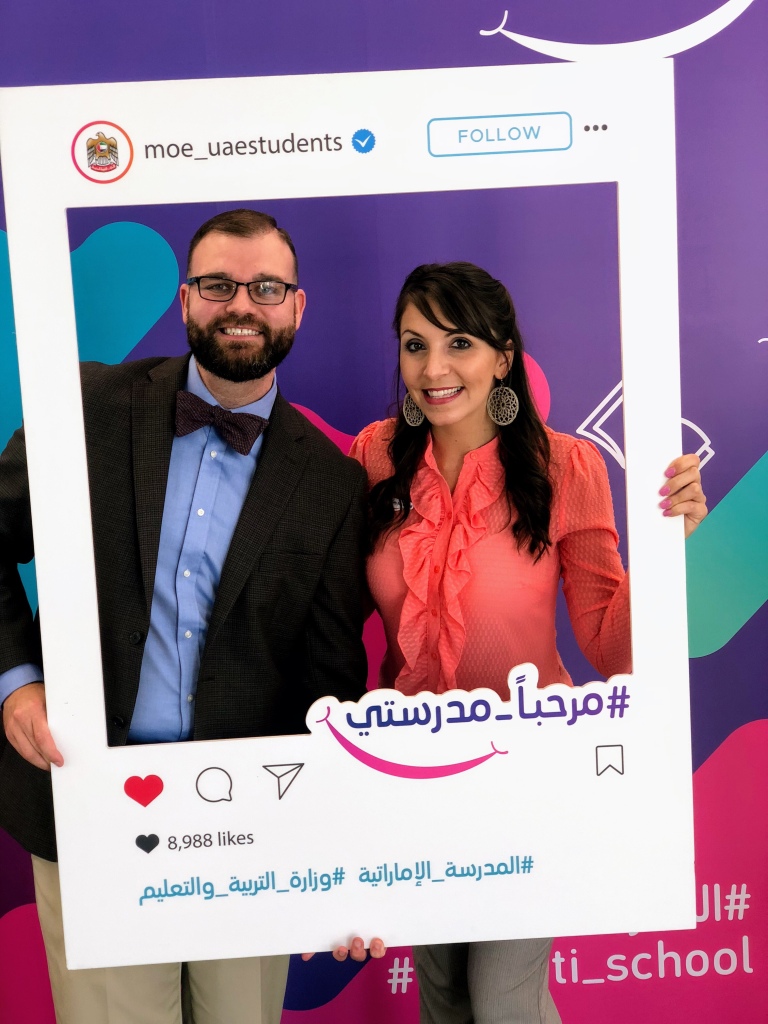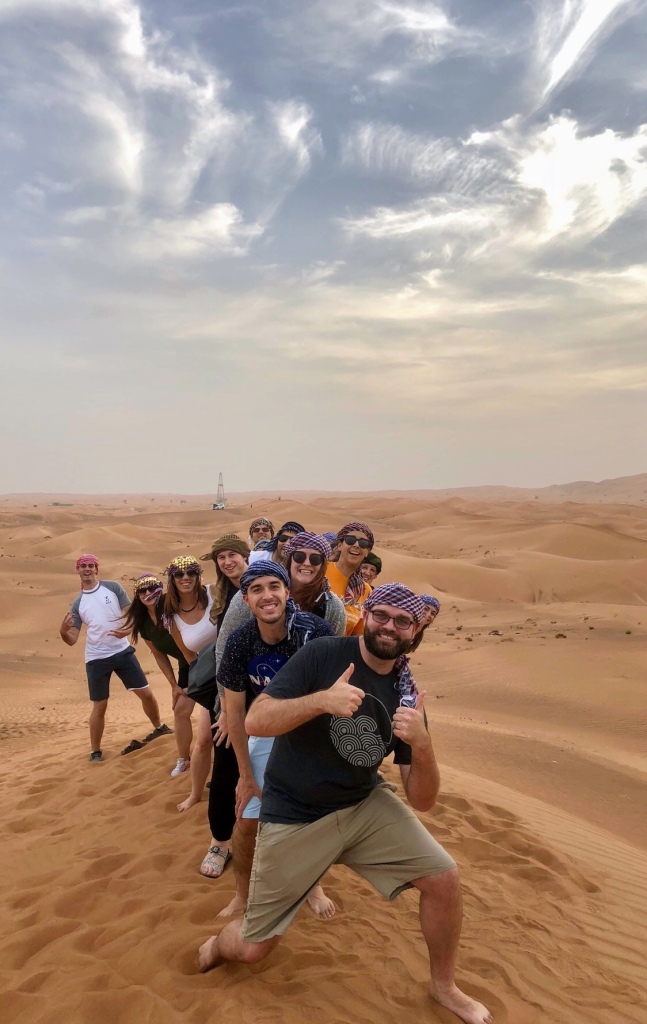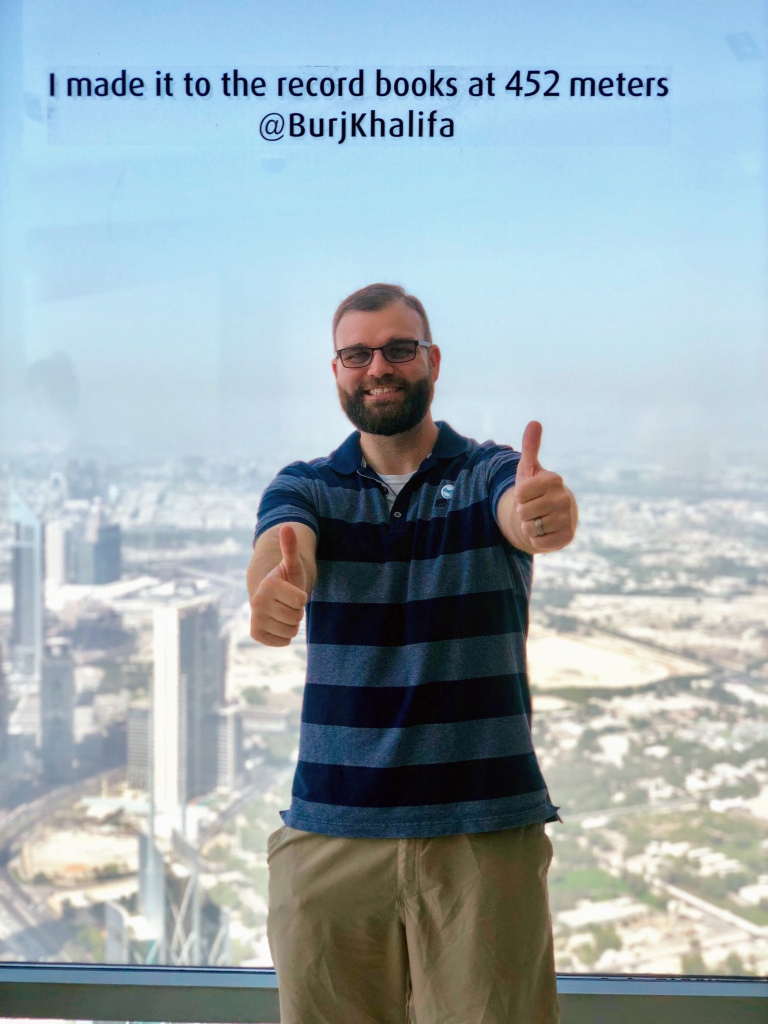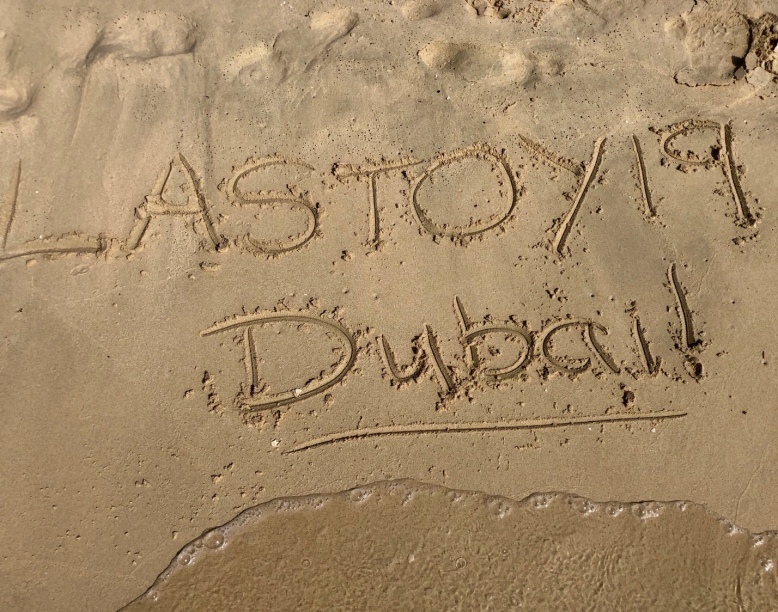I’ve never been out of the country before. Well, if you want to get technical about it, I’ve been to Mexico on a cruise, but I never have had the opportunity to be immersed into another culture entirely. That is, until now. Through an opportunity with STEM Revolution, I was able to travel to the United Arab Emirates and be a part of the STrEaM training initiative with the Ministry of Education of the United Arab Emirates. Joni Smith (@ScienceTeach83) and I, along with many others, made the 15+ hour journey to the UAE to spread the gospel of STrEaM Integration and best practices. However, what we quickly realized after a few short hours of working with Emirati teachers was that we would learn as much from each other than they would from me.

Lesson #1: Understanding Culture is the Gateway to Respect
As much as I read about the Emirati culture, nothing could prepare me for the lessons I would learn from the Emirati teachers first-hand. So many of them were eager to learn not only about the theory that supports STrEaM education, but also the best practices of it and how to infuse it into their school cultures.
Much of what we prepared to train teachers with was rooted in research that supported STrEaM, but was missing a link to Emirati culture directly. This reminded me of how we sometimes introduce content to our students without them having a direct link to how that content was relevant to them in some way. So we tweaked (as all awesome teachers do) to better engage our teachers with something they were very familiar with – Camel Races.
Now, I must admit, I had no idea what camel races were. I also had no idea how dangerous camel races are (well, used to be) for the jockeys who were often children. We were explaining “Innovation” to teachers and were planning on using the example of the nurse call button to illustrate incremental and exponential innovation. What made teachers able to understand these concepts were not the explanation of the terms or the hospital call button image that we were originally going to show. Instead, it was an image of the robot jockeys that are now used on the back of racing camels.
We replaced the image of the hospital call button with the image of a racing camel with a robotic jockey. In my group, I posed the question, “Can someone explain this to me?,” and the room ignited! I sought to understand what I was looking at, and the teachers were speaking over themselves with excitement to share this little piece of their culture with me. You see, the children jockeys that they used to put on the back of camels during the races would often get injured, some very seriously. So to address this, a robotic jockey was built so that the camels could be remotely piloted, ensuring the safety of people.
This had a double effect: 1) Teachers instantly understood the concepts that we were conveying to them and 2) they felt that they were helping me grow to understand their culture more, which created a more trusting atmosphere that we all benefited from.
I believe this level of cultural responsiveness is invaluable for any classroom that sees a diverse population of students. As teachers, we can look to make small changes and shifts in our instruction to allow students to be voices of their own stories. Seek less to be the bridge for new concepts. Instead, allow students to make these connections on their own using knowledge that they understand from their own culture, and seek to understand and solidify these connections for learners.

Lesson #2: Children are the Global Common Denominator
It’s easy to sometimes get stuck in a teaching rut. We’ve all been there. Same issues, same challenges, same strategies that don’t seem to produce the results we look to see. We ask ourselves, “My students are learning the content, but are they actually learning anything?” Speaking with Emirati teachers, I quickly felt quite at home because they face so many of the same issues that we face with students in the United States. “How do I make students want to learn?” “What can I do to really motivate my students?” “Do your students try to take the easy way out?” These were all questions I received from Emirati teachers, and felt that speaking about our students felt like speaking a universal language.
We spoke about how important it is for our students to be able to work together, the importance of building opportunities for students to be leaders and creative thinkers, and their endless love for Fortnite. I realized that as teachers, we are already part of connected group of compatriots who see the same issues and share the same types of emotions when we see successes and failures in the classroom.
 I made so many amazing teacher friends during my time in the UAE. Malek Zwein, a science facilitator, is one of these teachers. He’s already so innovative in what he wants to do with children in the Emirates. Many of the projects that he is either doing with children or plans to do with them are things that I do in my classroom with my students! I felt as if I had found my counterpart 7,000 miles away from home. I can’t wait to connect with him and work with him to take each others’ visions to the next level!
I made so many amazing teacher friends during my time in the UAE. Malek Zwein, a science facilitator, is one of these teachers. He’s already so innovative in what he wants to do with children in the Emirates. Many of the projects that he is either doing with children or plans to do with them are things that I do in my classroom with my students! I felt as if I had found my counterpart 7,000 miles away from home. I can’t wait to connect with him and work with him to take each others’ visions to the next level!

Teachers who can see that students are a common denominator not only in classrooms down the hall, but also classrooms across the globe have the ability to influence global change. Taking the time to understand the Emirati culture and connect with like-minded, passionate teachers helps teachers on both sides of the partnership build some really incredible opportunities for students in the future.

Lesson #3: Make Teaching an Adventure!
Before leaving the United States, I set up a FlipGrid for my students to follow along as I worked in and explored the United Arab Emirates. I wasn’t sure how engaged they would be with the concept. Part of my felt like they would find it silly, and part of me felt goofy for walking around recording videos of me showing them things and sharing my thoughts with them.
Then, the questions started coming in. Students had questions about the things that they were seeing in the videos and even generated unprompted questions about topics like geography, climate, and culture. Soon, I started creating responses that we’re tailored to these questions that students were asking. I put myself into the shoes of my students. What an incredible feeling to have someone around the world take time to answer a question that I might have about a place I had never been before.

Many of them came in everyday asking my co-teacher whether I had posted a new video or a response to one of their questions. It’s this organic level of curiosity and question-forming that I want this year of being State Teacher of the Year to offer to my students. I want them to feel plugged in to this adventure, and encourage them to elevate their voices, questions, and opinions on the things I am able to see and do.

Teachers don’t have to travel half way around the world to make learning an adventure. Try and take small steps to engage students in unique ways. Like many students, my students don’t often have the opportunities to travel and experience a great deal first-hand. Take every advantage to model learning where it happens naturally – in the world around us!

An Unforgettable Adventure
I want to give a few shout-outs.
- First, to STEM Revolution and the UAE Ministry of Education for establishing an amazing vision for STrEaM Integration and allowing me to be a small part of it.
- Secondly, to the amazing Emirati teachers who are grappling with STrEaM Integration head-on and planning some incredible learning experiences for their students. I can’t wait to see what you all accomplish this year!
- Lastly, to my students, my co-teacher, and my school family who supported my adventure from afar and who allow me to make an impact at home and around the world!
Who knows where the next adventure will take me, but I’m already excited for the challenge!

Spencer, this is STEMazing! Thanks for sharing. Your school is lucky to have such an amazing educator!
LikeLiked by 1 person